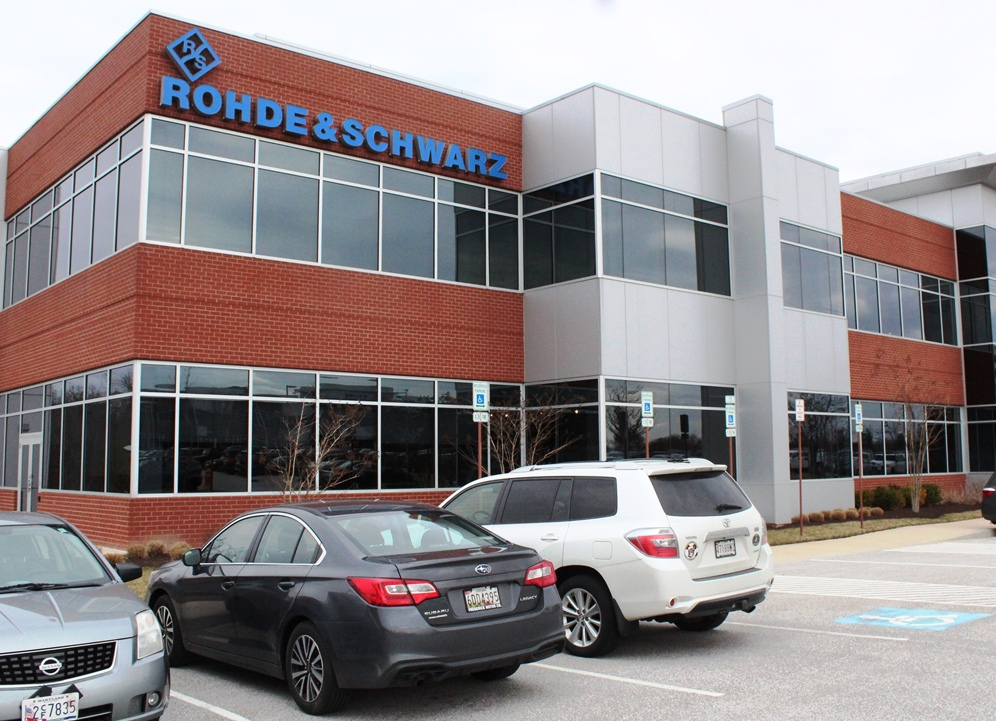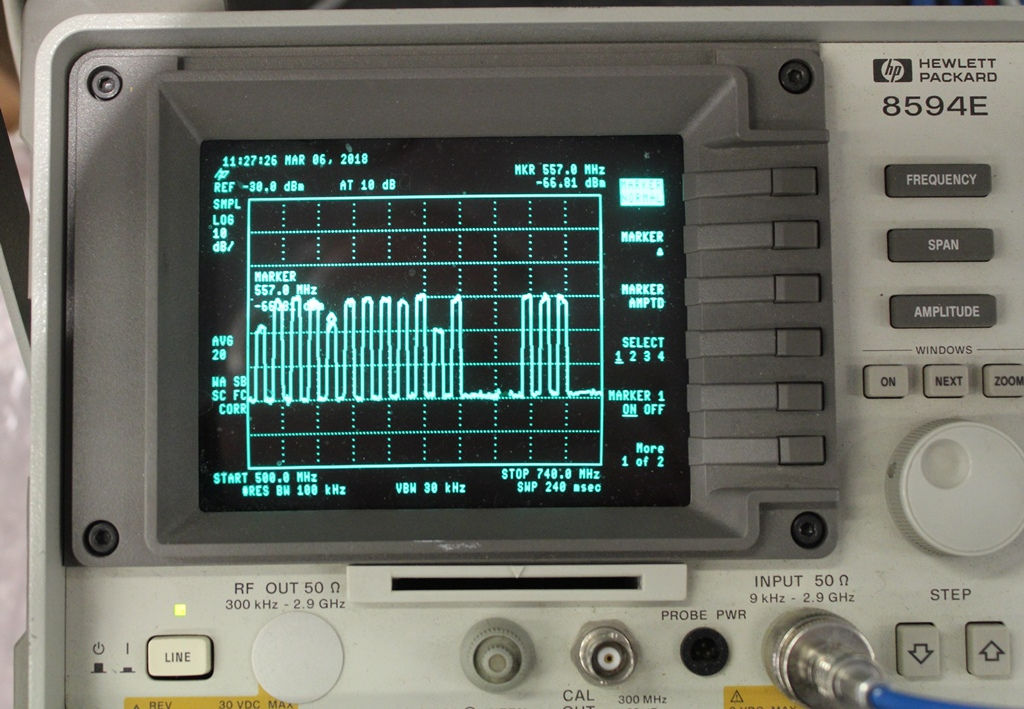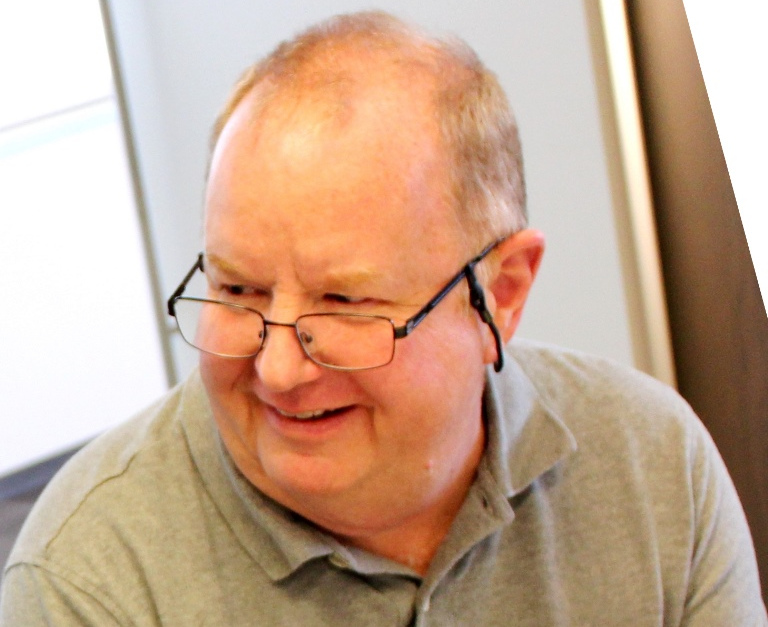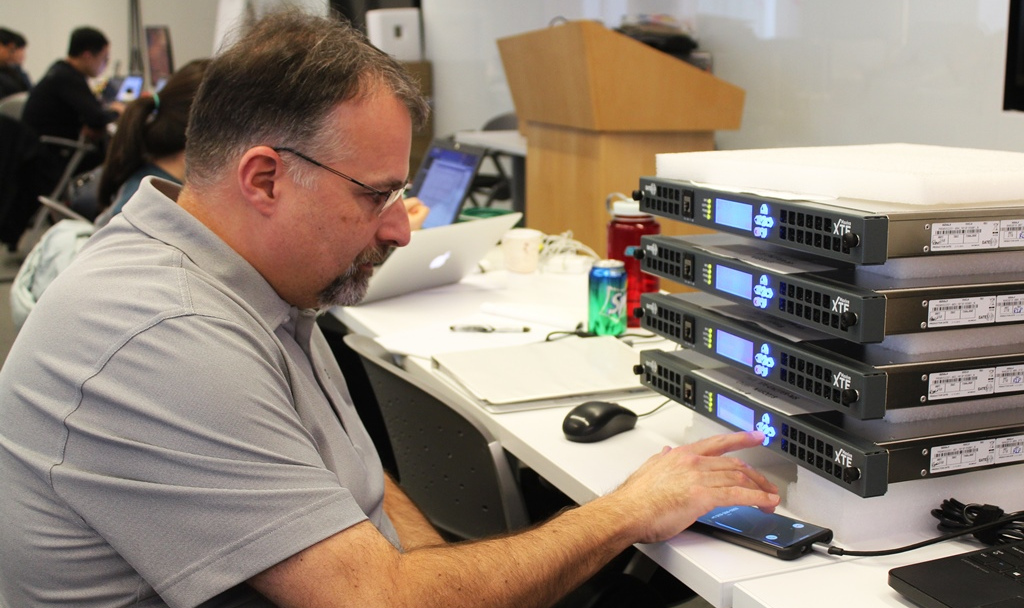‘Plugfest’ Refines ATSC 3.0 Standard
COLUMBIA, MD.—The latest in a continuing series of ATSC 3.0 compatibility testing sessions, or “Plugfests,” took place in Columbia the week of March 5-9, with a focus on making sure all the pieces fit together in the portion of the transmission standard covering studio-to-transmitter links (STL) and single frequency networks (SFN).

As explained by testing leader, S. Merrill Weiss, chair of the ATSC’s STL and SFN Small Group and president of the Merrill Weiss Group LLC engineering consultancy, this round of testing is necessary to ensure everything fits together and functions properly as U.S. 3.0 deployment begins.
“The part of the system we’re testing is pretty much from the Physical Layer all the way up to the top,” said Weiss, noting that a complete end-to-end ATSC 3.0 system had been set up for the testing work.
[Putting Next Gen TV to the [Full] Test]
“We’re using the latest versions of some of the standards, so all of the standards from the Transport Layer, at least, and probably parts of the Application Layer down through the Physical Layer, are included.”
Weiss explained that evaluation of the STL standard (A/324) was essential to ensure successful ATSC 3.0 performance at TV stations with remotely located transmission facilities.
“What makes the STL standard different from some of the others is that we’re trying to pass signals to transmitters over real-world, long-distance circuits—many of which may be less than perfectly reliable—and the [ATSC 3.0] transmission system more or less expects the delivery to be perfectly reliable; otherwise, the transmitters may have to mute for a brief period of time until [uncorrupted] data starts up again.
The professional video industry's #1 source for news, trends and product and tech information. Sign up below.
WHAT GOES ON AT A ‘PLUGFEST’?
“A Plugfest has several purposes,” said Weiss. “One is to prove that the standard works. Another is to find either errors in the standard or to identify places that could be written better because people may interpret them differently. It’s also to prove that the various equipment that is being built to operate with the standard works correctly.

"In the early development of the equipment there can be either mistakes made or there can be things that are obvious to the people who wrote the standard, but not obvious to the people who come at it independently and perhaps were not part of writing of the standard,” he added. “You end up with equipment that should connect together through a protocol, but something gets missed and the protocol doesn’t quite work as intended. Plugfests help find such things long before equipment gets anywhere near a broadcast operation.”
‘IT’S NOT OVER UNTIL IT’S ALL OVER’
In light of the FCC’s decision last November to allow broadcasters to begin broadcasting in ATSC 3.0, coupled with the champagne toast at the January Consumer Electronics Show by ATSC, NAB and CTA heads celebrating the completion of the
standard, will this latest Plugfest ring down the final curtain on such events?
“No; not at all,” Weiss said. “All that [the FCC’s decision and CES ceremony] said was that the standard was ready to be released; it didn’t say it’s finished. We hope it never will be finished, so it can continue to be developed over time and keep broadcasting current with the ongoing development of technology.”
He observed that the overall standard encompasses some 20 documents, with each of those laying down a great deal of technical information and, as nothing is perfect, especially early in its existence, mistakes or problems of one sort or another are bound to be encountered.
“There have already been a number of updates to some of the standards,” said Weiss. For instance, when A/324 was published earlier this year it had some changes in it from the candidate standard and some of the systems were built to the candidate standard and didn’t include those updates.”

He noted that the week’s Plugfest testing had identified some equipment falling into this category and much of it already had been updated for further testing during the event.
“You have to understand, too, that there was a need to get systems on the air in time for the Olympics in South Korea before certain parts of the standard were completed,” added Weiss. “The updates that have happened since then are now getting folded back into that equipment. One of the things we’re trying to accomplish is to help find where changes need to be made.”
THE TESTING FACILITY
Physical space at Plugfests such as this one is typically divided into two areas or “sides,” with one portion allocated to exciters, schedulers and other transmission gear, and the other area containing demodulators and monitoring gear. Computers, prototyping setups, programmable logic arrays and a wide variety of test and measurement equipment are spread across both sides. The facility is reminiscent of a well-equipped university computer lab. A hushed stillness prevails within the room, interrupted only by an occasional instruction from the event coordinator when it’s time to enter another testing mode.
In addition to the participants from ATSC 3.0 equipment development and manufacturing entities, the guest list at this latest Plugfest also included representatives from two major supporters of the new DTV transmission standard, the Sinclair Broadcast Group, with headquarters in nearby Hunt Valley, Md., and Capitol Broadcasting Company, owner and operator of WRAL-TV in Raleigh, N.C., which has been airing ATSC 3.0 signals on an experimental basis since June 2016.

As explained by Matt Brandes, WRAL-TV’s transmitter chief engineer, neither his company nor Sinclair were actively involved in the week-long testing, but had sent representatives to assist with the Plugfest equipment setup and teardown.
“WRAL and Sinclair provided the networking infrastructure for the Plugfest, as well as some test equipment,” he said.
[CES Marks ATSC 3.0's Prelude]
Weiss noted that Sinclair’s contribution of a network emulator was especially welcomed, as it allowed Plugfest participants to simulate real-world STL conditions in which data packets can be dropped, bit-errors added and other such transmission path signal “stressing” can take place.
“The network emulator provides us with a variety of ‘stresses’ we can put on the data,” said Weiss. “This is another important aspect of what we’re doing.”
INTERPRETATION OF THE STANDARD
Brandes added that Plugfest events also provide an opportunity to get a close-up look at 3.0 tweaks and changes that could impact his operation.

“We like to keep an eye on the standard and get information in advance so you can do the upgrades and still stay on the air,” he said. “It could be that you do an upgrade and then all of a sudden nothing works. Receivers become blind to what you’re transmitting.”
He agreed with Weiss that additional work was necessary in refining parts of the standard that could be misconstrued due to ambiguous wording.
“A lot of the stuff we’re finding is more due to interpretation of the standard than a defect in the standard itself—it’s how it’s read by different people. So that’s when they need to go back and clarify the wording to make it more obvious as to what they’re trying to do. There are a couple of places where it seems like assumptions may have been made. It leaves enough room for different interpretations.”
“The issue is that the technology can be right,” added Weiss. “but the explanation of it may not be precise enough to make sure that everybody gets it right.”
[FCC Approves Next-Gen TV for OTA Broadcasting]
The March 2018 event marks the fifth ATSC 3.0 Plugfest. Previous testing sessions were conducted in China, Korea and Hunt Valley, Md. The current testing involved 28 individuals representing some 16 broadcast equipment manufacturers or other entities involved in the production or deployment of the 3.0 standard. Participants journeyed from as far away as South Korea, Germany, France, Denmark and Canada. It was hosted by Rohde & Schwarz USA at its Columbia, Md., facility.
Companies participating in this latest Plugfest include AFT, Aircode, ATbis, Avateq, Clever Logic, DekTec, DigiCAP, Enensys Technologies, ETRI (South Korea’s Electronics and Telecommunications Research Institute), GatesAir, KaiMedia, Lowasis, ProTelevision Technology, Rohde & Schwarz, TeamCast and Triveni Digital.
For a comprehensive list of TV Technology’s ATSC 3.0 coverage, see our ATSC3 silo.
James E. O’Neal has more than 50 years of experience in the broadcast arena, serving for nearly 37 years as a television broadcast engineer and, following his retirement from that field in 2005, moving into journalism as technology editor for TV Technology for almost the next decade. He continues to provide content for this publication, as well as sister publication Radio World, and others. He authored the chapter on HF shortwave radio for the 11th Edition of the NAB Engineering Handbook, and serves as contributing editor of the IEEE’s Broadcast Technology publication, and as associate editor of the SMPTE Motion Imaging Journal. He is a SMPTE Life Fellow, and a member of the SBE and Life Senior Member of the IEEE.

